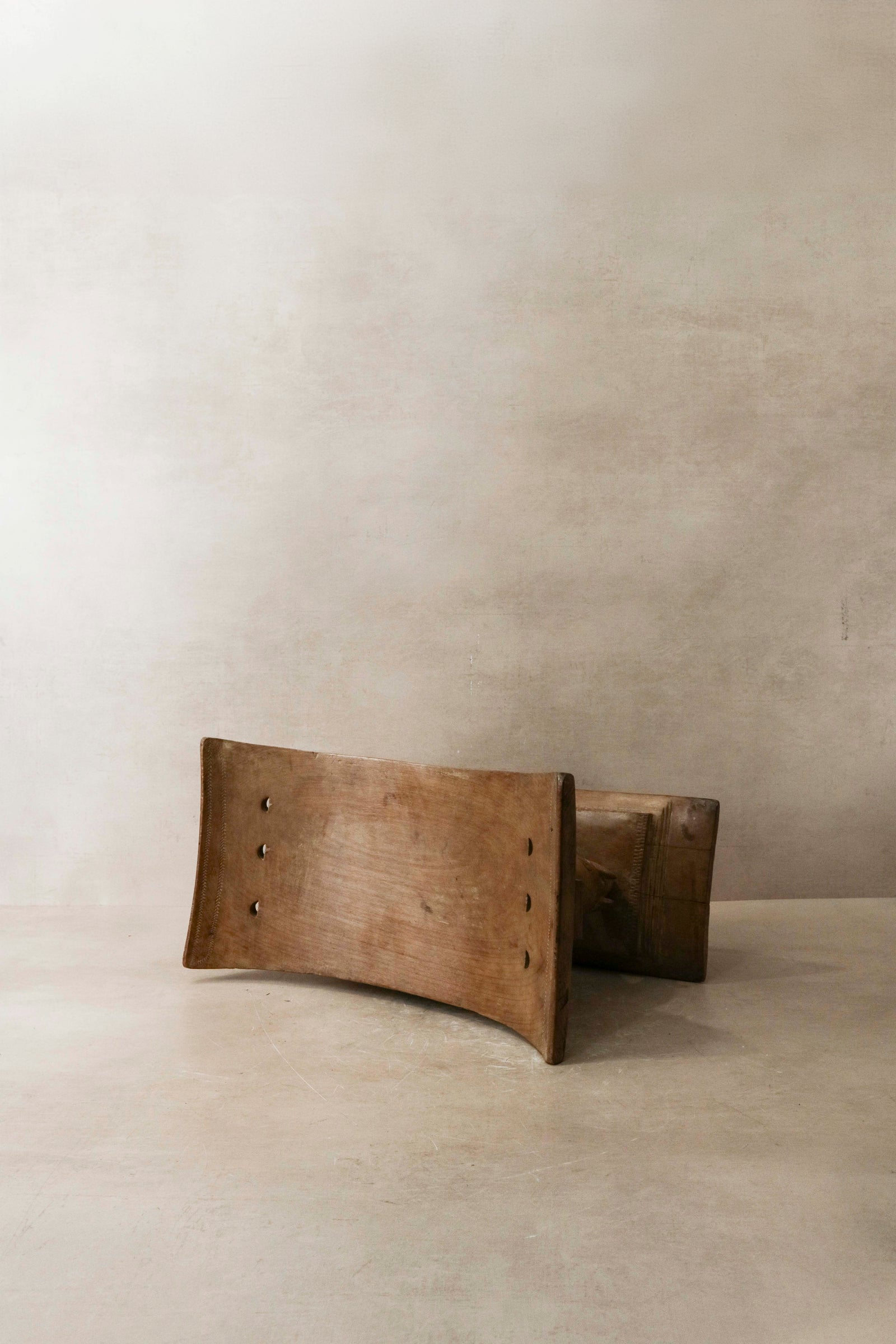



Ashanti Stool - 138.1
Introducing the Ashanti Stool
Elevate your living space with the Ashanti Stool, a masterpiece that embodies the rich heritage and exceptional craftsmanship of the Ashanti people. This unique piece not only serves as functional furniture but also as a cultural artifact that tells a story of tradition and artistry.
Key Features and Benefits
-
Authentic Craftsmanship: Hand-carved from a single piece of wood, this stool showcases the meticulous skill of Ashanti artisans. The crescent-shaped seat and intricate carvings reflect designs traditionally reserved for chiefs and important figures, symbolizing status and reverence.
-
Cultural Significance: Inspired by the sacred Golden Stool, believed to house the soul of the Ashanti nation, this piece carries a profound sense of history and spirituality. Owning such a stool is akin to holding a piece of the Ashanti legacy.
-
Versatile Decor: This stool fits seamlessly into various interior settings.Its timeless design complements both traditional and contemporary aesthetics, making it a versatile addition to any home or office.
Enhance Your Space
-
Home Interiors: Place the Ashanti Stool in your living room or study to serve as a conversation starter, adding a touch of global elegance to your decor.
-
Office Ambiance: Incorporate this piece into your workspace to infuse a sense of culture and sophistication, creating an environment that inspires creativity and respect for diverse traditions.
-
Meaningful Gift: Gift this stool to art enthusiasts or those who appreciate cultural artifacts, offering them a unique and thoughtful present that carries deep historical significance.
Experience the Legacy
Embrace the opportunity to own a piece that transcends mere functionality.The Ashanti Stool is more than furniture; it's a testament to enduring craftsmanship and cultural richness. Add this exceptional piece to your collection today and celebrate the timeless beauty of Ashanti artistry.
Historic Detail : The Golden Stool is a sacred symbol of the Ashanti nation believed to possess the sunsum (soul) of the Ashanti people. ... These stools were made for chiefs and important people and were considered important state regalia. They were believed to contain the soul of the owner. The seats were crescent-shaped, and the stool was carved from a single piece of wood, reflecting the skill and talent of the stool carvers and not nailed together like European chairs. Among the Akan, a well-carved stool serves multiple purposes, in addition to providing a well-designed seat to sit upon. Among the Akan, when a daughter reaches the age of puberty, her father is expected to give her a stool that becomes not only her property, but also identification with her soul and being. Often stools will be seen with their upper corners worn from being leaned up against the wall or laid down on their sides, all to prevent someone else from sitting on it or worse a malevolent spirit could take charge of the stool and the owner’s spirit. Stools start out as a white wood and through time take on a burnished and well-worn hue. Designs of stools may vary depending on the inventiveness of the stool carver, and today many of the historical forms are either forgotten or interpreted anew.
Size:- 42cm L x 23cm W x 27cm H





